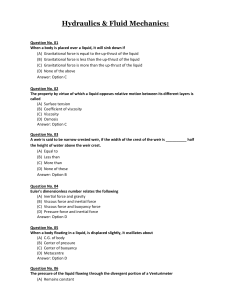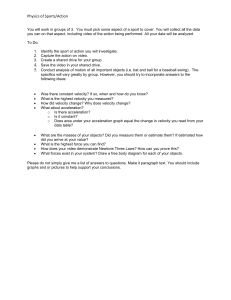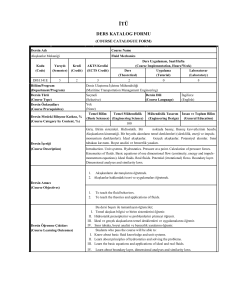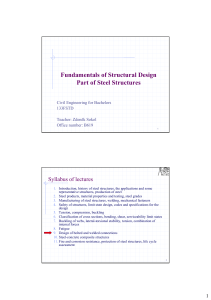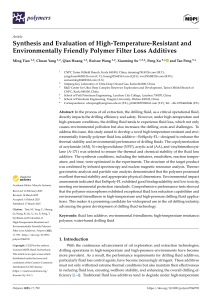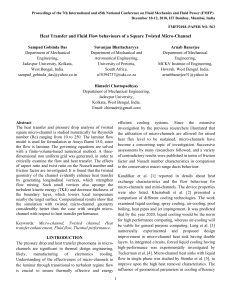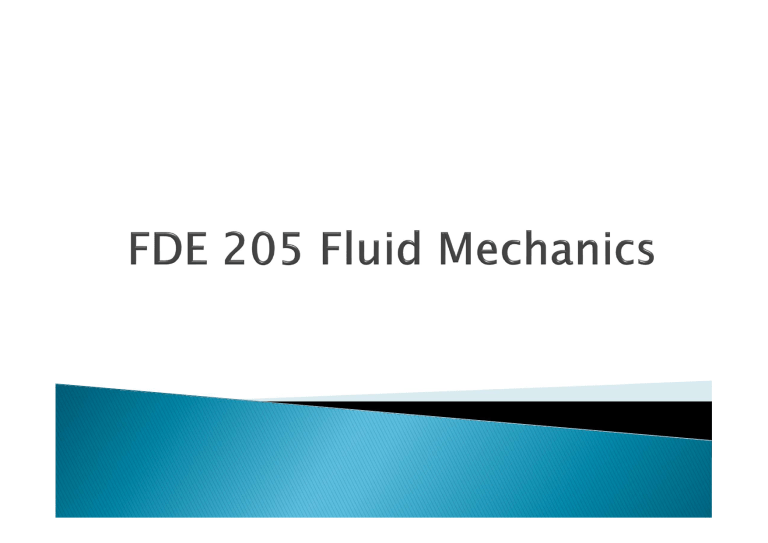
Deals with the forces acting upon fluid in
motion.
)(Kütle Akış Hızı ) : It
Mass Flow Rate ( m
measures the mass of fluid that passes a
given point per unit of time (kg/s)
m
m
t
Mass Flux (Φ)(Kütle Akısı ) : is defined as the
rate at which a certain property such as mass
moves through a unit area(kg/s.m2)
m
m
Φ
At A
Volumetric Flow Rate (Debi) (Hacimsel Akış
Hızı): It measures the volume of fluid that
passes a given point per unit of time (m3/s)
V
Q
t
Average Velocity (Ortalama Hız ): <ν>
Fluid does not flow with the same velocity at
different points of a pipe (m/s)
<ν>
Q
A
Viscosity (Viskozite): μ
Resistance to flow.
Some fluids flow easier than the others inside
a pipe.
µ catchup> μ honey > μ oil> μ water
For Liquids T μ
For Gases T μ
Unit of viscosity:
Pa.s = N.s / m2 = kg/m.s (SI unit)
lbm/ft.s (British units)
Poise = g/cm.s (cgs units ) 1poise =100 cp
Kinematic viscosity: (viscosity/density)
Control Volume (Kontrol Hacim):
In some cases, it may be necessary to define
a finite region fixed in space to apply the
principles of conservation of momentum,
energy and mass on a system. This region
through which the fluid flows is defined as
the control volume.
Steady State ( Kararlı Hal/ Yatışkın Hal):
A system in a steady state has properties that
are unchanging in time.
Unsteady state (Kararsız Hal/Yatışkın
Olmayan Hal):
A system in an unsteady state has properties
that are changing in time.
If the force is normal to the surface of the
fluid : Normal stress: Pressure
If the force parallel to the surface: Shear
Stress (Kayma gerilimi) τ (tau)
Bottom plate is stationary.
Top plate is moving with Vz
The layer of water adjacent to the top plate is
carried along at the velocity of plate.
The layer just below that is at a slightly slower
velocity.
Each layer moves at a slower velocity.
Experimentally for many fluids the force(F) is
directly proportional to the velocity (ΔV) and
to the area (A), inversely proportional to the
distance Δy.
(kayma gerilimi)
(shear stress)
yz
viscosity
Hız gradyanı
(shear rate)
(kayma hızı)
As Δy approaches zero, by definition of
derivative:
yz
z
y
z direction of force (kuvvetin uygulandığı yön)
y direction of normal (kuvvetin uygulandığı yüzeye dik olan yön)
yz
The shear stress in y direction due to force applied
in z direction (vector) (also known as momentum flux)
Fluid types can be categorized as newtonian
and non-newtonian.
Newtonian Fluids are those which follow
Newton’s Law of Viscosity. (e.g. Water)
If a fluid does not follow the law, then it is a
non-newtonian fluid.
If we plot shear stress vs shear rate graph?
Bingham plastic: these are simplest because
they differ from Newtonian only in that the
linear relationship does not go through the
origin.
E.g. Margarine, chocolate mixtures
Pseudoplastic fluids (shear thinning)(kayma
hızı ile incelen): The majority of nonNewtonian fluids are in this category,
including mayonnaise, concentrated fruit
juice.
Burada incelme, akışkanın akmaya karşı
gösterdiği dirençte gevşemeyi ve zayıflamayı,
kalınlaşma ise koyulaşma ve güçlenmeyi
yansıtan derişim terimi olarak
kullanılmaktadır.
Dilatant (shear rate thickening): Their flow
behaviour shows an increase in viscosity with
increasing shear rate. (Dilatant akışakanlarda
ise tam tersine bir davranış bulunduğundan
kayma hızı ile kalınlaşan akışkanlar da
denilmektedir.)
E.g. Gelatinized starch
Newtonian Law can be generalized with Power
law equation
yx
dvx
K
dy
n
n: flow behavior index (akış davranışı göstergesi)
K: consistency index (kıvam göstergesi )
n<1pseudoplastic
n>1dilatant fluids
n=1newtonian fluids (K=μ)
When some fluids are subjected to constant
shear rate they become thinner or thicker
with time.
Kek hamuru
There is a fluid (ethanol) between two parallel
plates, at 273 K, with a viscosity of 1.77 cp.
The distance between two parallel plates is
0.5 cm. The velocity of lower plate is 10
cm/s.
Calculate the shear stress.


